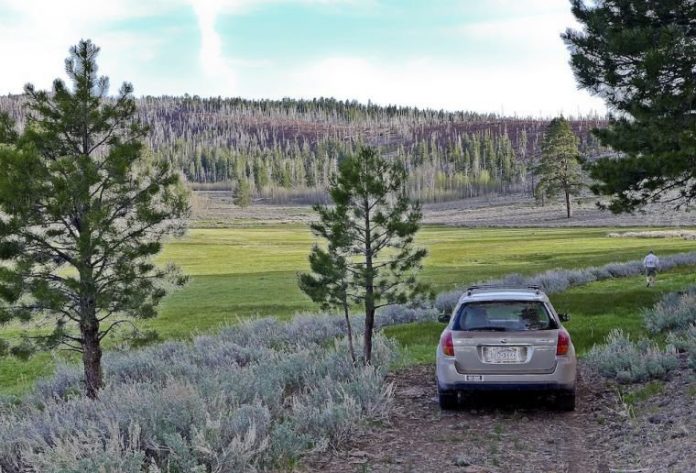We parked in front of the US Forest Service building in Alturas, Modoc County’s only incorporated city. The shiny new building was a stark contrast to the rest of sleepy Alturas which appeared to be frozen in the 1950’s. At just under 4,000 square miles, Modoc County is the twelfth largest county in California, yet it has a population of only 9,147; a number that has been steadily declining.
That suited us just fine. We had not come to this isolated county in California’s northeastern corner for the vibrant night life. In addition to being well off the beaten path, the Modoc Plateau is a vast and varied landscape with unusual wildlife including pronghorn and herds of wild horses. We hoped guidance from the Forest Service would send us in the right direction.
We decided to head toward the Warner Mountains, a north-south trending mountain range east of Alturas that rises to nearly 10,000 feet. Rain that falls on the wet western slope of the range gathers to become the Pit River bound for Lake Shasta, while on the dry east side, huge alkaline lakebeds mark the beginning of the Great Basin and the endless march of sagebrush into the intermountain west.
Twenty miles south of Alturas, at the tiny berg of Likely, we headed east into Modoc National Forest and the Warner Mountains. Juniper and sagebrush turned to pines and firs as the road climbed the lower slopes of the Warner Mountains. By now, the pavement had ended and we sped comfortably along a beautifully graded dirt road. It seemed that around every turn, there was another huge green meadow perfectly nestled in the forested foothills.
Near the upper end of one meadow, at a sign marked Bearcamp Flat, we turned onto a side road and rolled carefully around a bend and into a small recess in the meadow at the edge of a forest of lodgepole and Jeffery pines—our campsite for the night.
Rarely does Mother Nature deliver a drive-to picture postcard setting like this, but here it was. We rolled out our sleeping bags on a green short grass meadow next to a gentle stream of new snowmelt that flowed toward the huge open meadow below us. Remnants of winter’s snow cornices lingered on the ridges of the mountains beyond. Comfortable in our camp chairs, we watched the evening light wash over our little slice of solitude.
Most of the next day, we drove along the same mountain road exploring the creeks and side canyons that enticed us. Around every bend, up every creek, we found another beautiful meadow or cascade. We were never far from the car, yet in early May, we saw nobody.
This area below the South Warner Wilderness turned out to be our favorite spot, but there was plenty to see everywhere we went. North of Alturas, miles and miles of juniper and sagebrush stretched across a huge high desert plateau. At the occasional lakes and wetlands that dotted this volcanic tableland, we saw sandhill cranes, cinnamon teal, black terns, and beaver. We wondered what this spot on the Pacific Flyway would look like during the peak of the fall migration.
I have never experienced such a powerful combination of natural beauty and solitude just outside my car door. We came before summer visitors and fall hunters tarnished the setting, but if backpacking demands more hardship than you care to endure, yet car camping in numbered sites is too civilized, the Modoc Plateau and the Warner Mountains may have the balance of wildness and car comforts to suit you.












